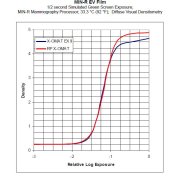I think that the phrase "just enough to neutralize the acidic Borax" is a gross oversimplification of what happens in D-76. We know that Borax is not just some alkali, it is a good buffer at 8.5.True, but it contains the acidic Metol salt. And to be honest I'm still not entirely clear on precisely how D-76 achieves its operating pH. Haist says there is just enough borax to neutralize the acidity of the Metol salt, and when I read "neutralize" I take it to literally mean the acidity of the Metol salt and the alkalinity of the Borax are gone. If that is the case you're left with the Metol free base, 100g sulfite and 5g HQ. I guess 5g HQ is enough to lower the pH of the sulfite solution all the way to 8.5? Another way to look at it would be to say the Metol salt and HQ bring down the pH of the sulfite solution, the the Borax then maintains the resulting pH (with some buffering). Confusing.
There is a profound difference between your dev and Xtol: the latter one has to work with tap water which can have quite an effect on solution pH as I hear. It also has to work with all kinds of film, fresh and aged. Result: Xtol (and any other commercially sold developer) has to go easy on film or forums are full with "OMG Xtol gave me foggy results!!!" postings. With a home brew developer, optimized for your personal choice of film and development procedure, you have a lot more degrees of freedom that you can use (and apparently have used) to your advantage.We sort of got there with the 1:1 ratio of Dimezone/ascorbic acid. But before pursuing that further I first wanted to see how far I could push the idea of maximum speed/minimum gamma. As a proof of concept, we've exceeded expectations, but in reality I think from a tone reproduction perspective I would need to pull back a little on this. More contrast is needed (in my opinion).
So far in the initial prints from this extreme version, grain seems similar to that of XTOL 1+1 developed to normal contrast, but I'm not sure, and a lot more printing of various comparative densities, exposure levels, and then image evaluations need to be done. From my perspective this is still just an early-phase test of various concepts. Sorry if that's a little depressing
It sounds more depressing than it needs to. You have just created a developer that fills an important niche for you and some others here. That developer keeps contrast under control with a very straight characteristic curve and full speed. So what if it ends up a bit more grainy and a bit less sharp than Xtol? Xtol lost you a couple of stops if you developed to the same contrast for crying out loud! Can you improve your dev? Most certainly! But you can still enjoy the results you're getting right now. Once you start looking at your images after greater enlargement and see things you want improved, you can work on that dev step by step, raise Sulfite, lower Sulfite, add other solvents, try out different restrainers, maybe add a weak buffer, or a sequestering agent. None of this has to happen over night ...


 ). First you need data. Then you have to actually use the stuff and see if you like how it works for you. The goal here was to see if it is possible to get low contrast (for very high contrast subjects) while retaining both full film speed, and a long exposure scale (ie without destroying highlight detail). And then of course there is image structure to consider.
). First you need data. Then you have to actually use the stuff and see if you like how it works for you. The goal here was to see if it is possible to get low contrast (for very high contrast subjects) while retaining both full film speed, and a long exposure scale (ie without destroying highlight detail). And then of course there is image structure to consider.


